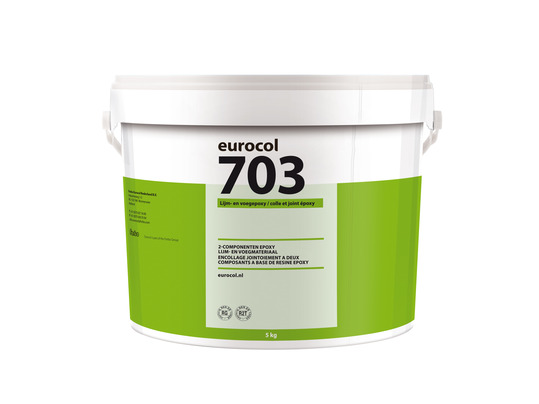eurocol
703 ADHESIVE AND SPOUT EPOXY
2-component, sprayable epoxy-based adhesive and joint material for waterproof, acid- and heat-resistant grouting of ceramic floor and wall tiles and glass mosaic. Maximum joint width 12 mm. Applicable to almost all well-constructed wall and floor constructions, such as cement and plaster-like surfaces, sheet material, floor and wall heating constructions in indoor and outdoor applications.






